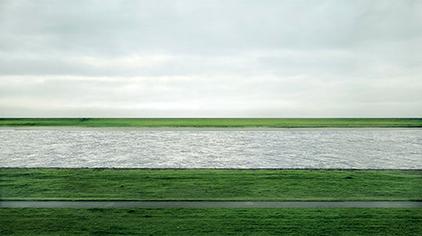The image above is the most expensive photograph ever sold, coming in at a cool $4.3 million USD (2.7 million pounds at the time). The photographers were quick to criticise - suggesting the print was of poor quality and would soon fade - asking whether or not it would meet their professional standard requirements - declaring that there was nothing special about it and that anyone could have taken it. Unfortunately none of these things are the point.
In fact those calling for the metaphorical blood of the image had failed to grasp a message that they had heard just moments ago in a video of Simon Sinek. They were all focussing on what the image was and how it had been produced rather than considering why it existed in the first place.
Critically I am not pointing this out as a failure of the wedding and portrait photographers in the room. In their world the issues of how and what are of the utmost importance with the why often being reduceable to capturing a moment, a likeness, an event and so on. As wedding and portrait photographers that is their job, their reality. The failure comes from looking at the image as themselves and expected it to be judged by their standards. They expect and require the image to be able to stand on its own.
In the art world however works do not stand on their own. They stand in the context of all that has come before, all that will come after, and all that was occuring at the same time. On top of this they are accompanied by the interpretation of the artist, critics, and viewers. Art is free to take on a meaning beyond itself - in so doing it becomes more than itself.
Yet art is only part of what makes up the price of the image. The dirty old market also plays a role. As the photograph was auctioned this meant that it was worth what anyone was prepared to pay for it. In fact, more precisely, it is worth slightly more than the amount that the person who wants and/or is able to pay second-most is prepared to pay for it. As such we might well assume that the image may be worth more than $4.7 million. But what drove the winner of the auction to pay that amount for it?
The first thing we might consider is that they liked the photograph for its importance as a piece of art - its extrinsic context and the meaning that people had imposed on it. While that's nice it probably doesn't do much in terms of setting a price. What we need next is some kind of an expectation about what a fair price might be. This can be informed by previous art purchases, previous records, and any number of other things - interestingly what we see here is the influence of context once again. Finally with the picture now having permission to be worth anything the auction contributes to the final price - with each successive bid the price that the item is permitted to have increases. With each successive bid someone takes ownership away from the previous bidder. With each successive bid a person who owned the item has had it taken away and is tempted to take it back for just that little bit more. Arguably the auction process may drift from the objective value of the photograph toward the emotional value of the pride of the bidder.
A combination of these factors (and certainly more) are what make the image 'worth' the money to the person who buys it. It is not so much what the image is that matters but what the image means that matters. While this may begin with some sort of artistic meaning it probably ends up with more of an emotional meaning. The owning of the image becomes more important than the image itself.
So, is the photo worth the price that was paid for it? On it's own probably not - but that is not relevant. This auction and this photograph were never about the combination of ink and paper. They were both always about something more.
This may have been where the group ended up as well. Again I don't know, I had to leave early.


0 comments:
Post a Comment